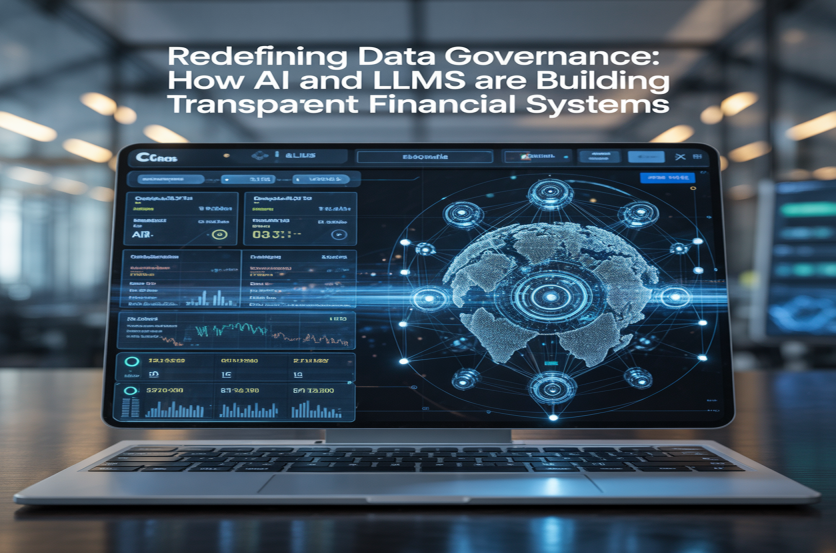
A Visionary at the Crossroads of Data and Intelligence
In an era where trust has become the currency of the digital economy, Dorai Surendar Chittoor stands as one of the foremost architects of transparent and explainable AI systems. For over a decade, he has led pioneering work at the intersection of data governance, large language models (LLMs), and ethical automation, transforming how enterprises and regulators understand and rely on intelligent systems.
Chittoor's mission is bold yet disarmingly simple: to make enterprise data transparent, self-explanatory, and verifiable, even within the world's most complex financial infrastructures.
From Static Records to Living Relationships
Early in his research, Chittoor realized that conventional data lineage frameworks designed to trace data movement were fundamentally limited.
"We were treating data as static records instead of relationships," he explains. "Every transaction carries intent, and understanding that intent is key to trust."
That insight led to the creation of a dynamic AI-powered data lineage model, one that maps not just how data moves but why it moves. Using graph-based algorithms and adaptive machine learning, Chittoor's model detects anomalies in real time and reconstructs decision paths without manual tracing.
In enterprise-scale deployments, organizations reported an 85% reduction in manual lineage work and 70% faster audit readiness, redefining the benchmark for transparency and compliance.
Key Innovation Insight: Chittoor's lineage framework enables machines to infer the purpose and impact of every data transformation, turning compliance into an intelligent, continuous process.
Bringing Language to Machines: The LLM Revolution
As large language models emerged, Chittoor saw a new frontier.
"Regulations are written in language, not code," he says. "If a model can understand language, it can understand law."
His latest systems integrate LLMs with governance engines, allowing auditors and compliance teams to ask questions conversationally like "Which datasets influenced this risk score?" and receive natural-language answers grounded in cryptographically secured lineage.
By transforming governance into a dialogue between humans and machines, Chittoor has reframed how organizations think about explainability, compliance, and accountability.
"Regulation and governance are linguistic problems," he notes. "If machines understand language, they can understand accountability."
Adaptive Governance: When Policies Learn
Among Chittoor's most forward-looking innovations is the adaptive policy engine, an AI system that autonomously reads and interprets new regulations.
Leveraging LLMs and natural language understanding, these engines continuously monitor updates from regulatory bodies, extract relevant clauses, and update internal compliance policies within hours instead of months.
For global financial institutions, where regulatory lag can mean millions in penalties, the results have been game-changing. Early adopters report 70% faster adaptation to changing laws, a feat once considered impossible without armies of compliance experts.
Key Insight: By enabling policies to "learn," Chittoor's approach turns compliance into a self-evolving ecosystem, one that adapts in real time to shifting global laws.
Designing Trust: Blockchain Meets Explainability
Chittoor's architecture doesn't stop at AI. By combining blockchain-based immutability with LLM-driven reasoning, he's created systems that are verifiable by design.
Every data transformation is logged on a distributed ledger, while LLMs automatically generate plain-language annotations explaining each step.
"Trust is not something you audit at the end," Chittoor explains. "It has to be designed into the data itself."
This fusion of transparency and traceability has positioned his work as a reference model for ethical AI, influencing enterprise standards and even government policy frameworks.
The Future: Self-Explaining Infrastructure
Looking ahead, Chittoor envisions self-explanatory infrastructure systems capable of articulating their own logic, decisions, and reasoning to any human reviewer, in any language.
"Large language models give us the bridge between machines and meaning," he says. "When systems explain themselves, trust becomes scalable."
His framework combines symbolic reasoning, AI observability, and adaptive intelligence, paving the way for governance systems that evolve as dynamically as the data they oversee.
Quote Spotlight: "We are entering an era where governance is not enforced, it's embedded."
Engineering Intelligence with Integrity
At the heart of Dorai Surendar Chittoor's work lies a single conviction: that technology and integrity must evolve together. His architectures spanning AI-driven lineage, LLM explainability, and adaptive policy design are redefining how enterprises measure and maintain digital trust.
In a world increasingly driven by automation, Chittoor's contributions stand out not for speed or scale alone, but for the moral clarity they bring to machine intelligence.
"In the end," he says, "governance is intelligence in motion. When systems can explain their choices, they earn trust, and that's the foundation of the future."
ⓒ 2025 TECHTIMES.com All rights reserved. Do not reproduce without permission.




